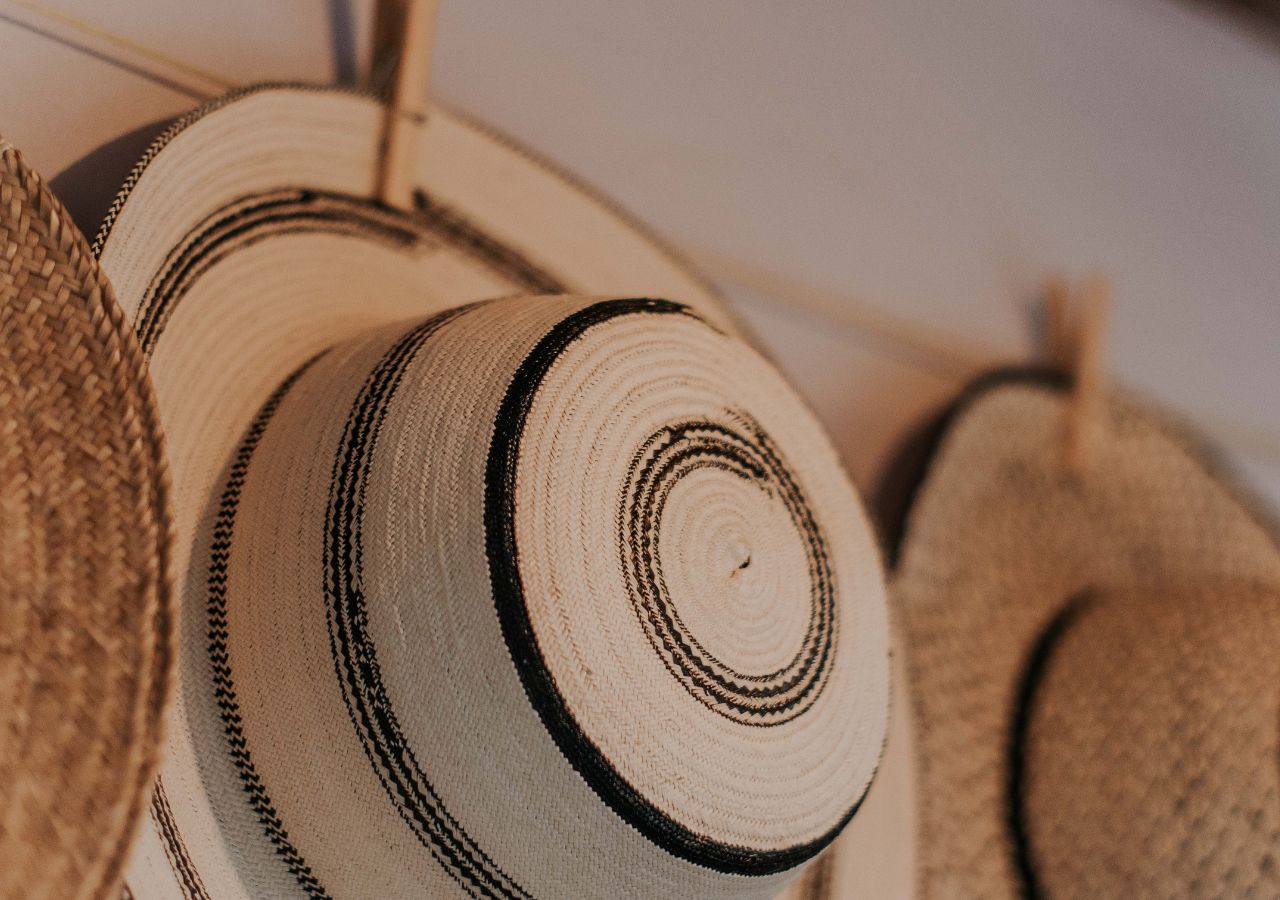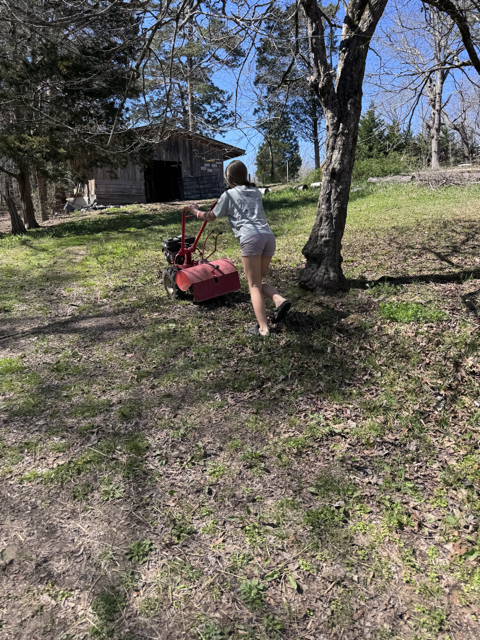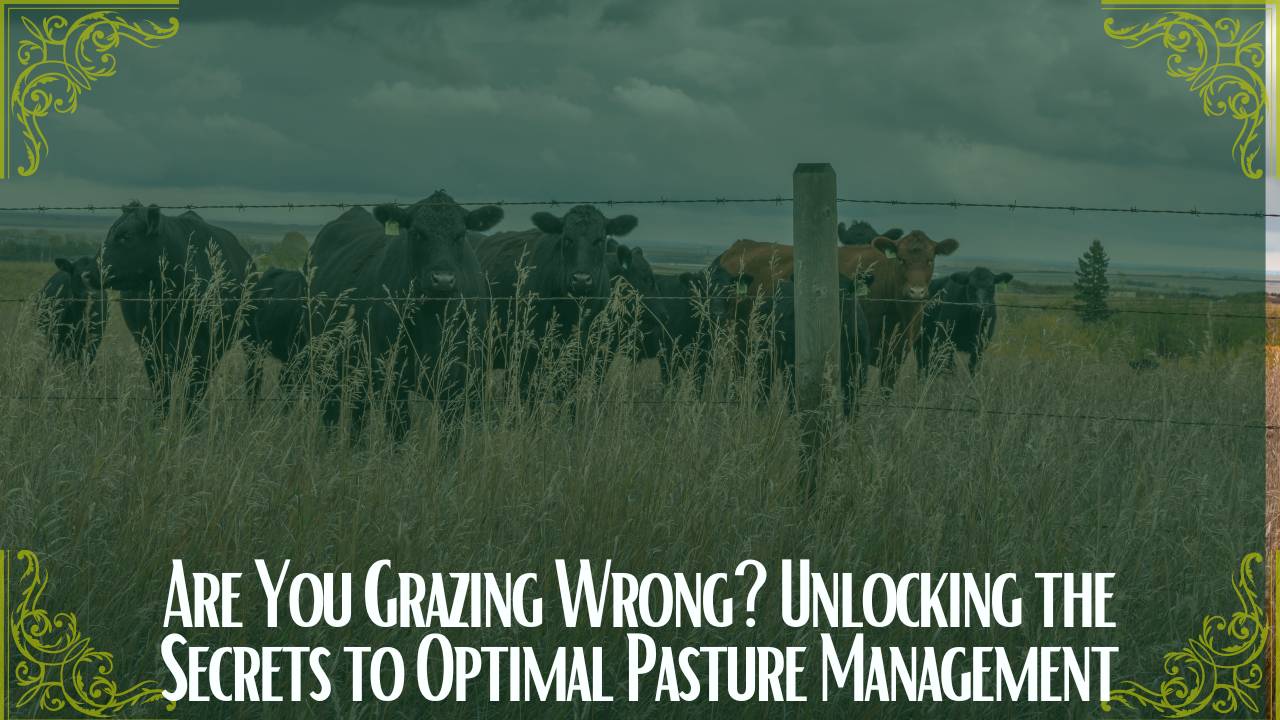Compost Tea, Comfrey Magic and Getting Your Graze-on :
Snippets from the Schoolhouse: 2nd Edition
Our mission: to help you feel more connected; to us at the Schoolhouse, to the natural world, to the Creator, to each other.
After years of living the natural, homesteady, hippie, homeschool, entrepreneurial lives, we asked ourselves, 'how can we best serve?''
So here we are--trying this.
Not youtube. Not tik tok. Not instagram. We're bringing together snippets from our life over here on Schoolhouse Farm--a window into our world--in hopes that you feel encouraged & connected. <3

What You'll find in This Edition:
- ReRuns from the Podcast: Are you Grazing Wrong?
- What’s going down at Schoolhouse Farm: The Bullet Points
- Lacey's Herbal of the Month: Comfrey
- Wellness habit of the month: The Joy of the Rush?
- Quote from our Studies: Monty Don
- Seasonal Gardening/Almanac: Garden Super Hero: Compost tea.
- Family Life Tip: Child Labor?
- Grazing News: Abundant Wait Times
- Native citrus in NC - The Flying Dragon
- Upcoming Projects
Rerun from the Schoolhouse Life Podcast:
What’s Going Down @ Schoolhouse Farm?
A bullet point list of current events & projects
- Lots of spring activity--still starting a variety of herb, flower & veggie seeds, but now starts the potting-up season and expansion of garden areas & we're having to weed whack & mow!
- BLOOM report: Forsythia, mini almond, bush cherries, paw-paws, daffodils are phasing out, but the lilacs are booming--time for some lilac elixir brewing!
- The Tater Towers are working!! Lots of green coming out--see pictures below!
- The cut flower area is going, though it's difficult to know how much of whats sprouting is flowers vs grass/weeds. :D
- Things at our retreat spaces are picking up! We hosted our very first wedding at the Schoolhouse last weekend! <3
- NC is on an indefinite burn ban, so our progress with developing the back acreage to pasture is delayed until that is lifted. (wild fires are spreading in western NC, and we have them in our prayers! The last thing they need is more devastation after the horrors of Hurricane Helene in September)
- Seedlings are booming and many have been transplanted into the garden! Herbs & even tomatoes.
- Seeds we’ve started indoors: Variety of Heirloom Tomatoes, Borage, Broccoli, Artichokes, Greens, Spinach, Scabiosa, Feverfew, Chamomile, Forget-me-nots, Marshmallow, Valerian, Canterbury Bells, Naughty Marigolds, Hollyhocks and soon both sweet & spicy peppers…(don't forget to listen to the podcast episode linked above for the top 3 secrets to healthy seed starts)
- In the garden or High Tunnel: Peas, Spinach, Lettuce, Carrots, Nasturtiums, Beets, wildflowers, Herbs--we're harvesting lettuces a few carrots still in the ground from last season, and hoping for beets and peas within the next 2 weeks.
- The comfoo (food club) is now selling the delicious & nutritious goodness we offer for collection to the Jewish Family Services--a community food bank for people of any faith. (members can now buy food to have directly donated to the food pantry)
- Can you pick a favorite flower? The Miniature Almond is absolutely stunning--it's miniature little blooms are splendorous inspite of their tiny size!

Lacey's Herbal Highlight: Comfrey
Is it really that deep?
Do you have this resilient and bountiful beauty growing?
The love of herbalism began for me when I was working at the Mast General Store in Asheville, NC. The year we lived there we stayed in a basement apartment with a small stoop we dominated with pots of pear tomatoes (which we learned are gross), prickly pear cactus, herbs and marigolds. It became clear to us, as we outgrew that stoop, that we wanted some soil of our own--the kind that didn't require a pot.
One of my co-workers heard about a recent herbal book purchase I'd made, and we got to talking. The first herb to jump off the page was comfrey--something I'd never heard of before, but in my reading it was becoming clearer and clearer that its potential for healing was boundless! Known to help heal broken bones and all but visibly seal up wounds, this somewhat invasive remedy was a wonder!
This co-worker was equally as excited about herb growing, and to my delight HAD this wonder plant! AND offered to bring me some! I do not remember this generous benefactrous' name, but perhaps that is because she was simply an enigma--the whisper of a human that connected me to a lifelong love and pursuit of natural healing. Her excitement and willingness to carry a pot of comfrey down the city streets of Asheville and into my adoring hands encapsulates the beauty of the plant-loving community. She gifted me so much more than just the comfrey plant that day!

ANYWAY, here we are, 20+ years later and the descendants of that comfrey plant have come with us to every home we've had, and it is now spread far and wide to those who've received or purchased a plant from us over the years. Prolific, comforting, mystifying--the comfrey plant is both edible and medicinal. Pollinators adore the bell-like purple flowers that emerge in early spring, and it's one of the easiest plants to propagate--sometimes too easy!
Comfrey draws blood to the area it's applied to activating healing & repair, in much the same way it taps deep minerals from the earth and brings them closer to the surface where neighboring plants can access, and the soil enhanced for all who use it. Tossing a leaf or two into the compost pile (or tea, see below) actually speeds up decompisition and aides in the processing of nutrients that might otherwise go untapped.
With a tap root that can go up to 13 feed deep, where comfrey grows, the earth is well nourished! In the garden/orchard we plant this dynamic accumulator at the base of our fruit trees as a living mulch that draws up deep down nutrients to share & inhibits the growth of competitive plants.
My favorite use of this honorable herbal is as a healing salve which I combine with the anti-fungal & microbial benefits of Tea Tree, the anti-inflammatory benefits of Frankincense & the soothing benefits of Lavender for an oinment we apply to almost any wound--internal or external.
Simply soak the carrier oil in any salve recipe with comfrey for up to a week in a sunny window, or simmer on very low heat for an hour or more, and use that oil with beeswax + drops of the Tea Tree, Frankincense & Lavender.

The Joy of the Rush?
Making the Best of 'Busy' (as a habit)
One of the biggest goals we've had for our home life is to keep things slow--'slow living' has been a hip term over the last decade. It's the dreaminess of an afternoon reading a novel in a sunny window, or sipping an afternoon brew in the garden. Perhaps an arts activity sprawls out and our whole day is dictated by creativity and whimsy.
A lot of this happened when the kids were younger. Afternoon naptime left me with solo time, which turned into quiet time as older kids aged out--but our calendars were dictated by these siestas and easy-going planless post-lunch periods.
Sadly, as all of the kids have aged out of naps and into extra-curricular activities, the slowness of our lives seems ever more elusive. In fact, the era of Covid (dare I speak that name), was a forced re-institution of these seemingly endless afternoons. We were home, we were together and we were bored. (i ADORE boredom).
As lovely as that time was, we re-evaluated so many of the outside events that were filling our weeks, and many of them never made it back into the routine. Some of the commitments to 'slowness' we'd been convicted of as new parents were peeled away as our children grew up and into higher levels of ballet, club commitments and special volunteering opportunities. While we don't regret any of those, we were happier when they were swiftly set aside--as bittersweet as the reason may have been.
And here we are, 5 years later. Our commitment to the slowness we so adored remains steadfast, and even still--our calendars, we find, are harder and harder to barricade from busy. We find ourselves wanting to fit things in, and needing to schedule them farther and farther out. And, hard as we try not to use words like 'busy'--we just are.
The baby/napping years are hard ones, and I'd take a day or two of them in trade, but I wouldn't want to go back there altogether. As hard as it often feels to feel steady or situated within our days, I am finding a new sense of gratitude for the 'busyness' I tend to dread. We have lives filled with joy and community, and we are blessed beyond measure to have the means and the opportunities to do all the things we do.
We say no a lot--to many things that sometimes we feel we're failing our children by choosing NOT to involve them in more of these interests. I sometimes wonder if we're running out of time to give them all the experiences they might enjoy or blossom in. Perhaps you can relate? Or, perhaps I can give you permission--it's ok to say no. Our kids won't be great at everything, or enjoy it all, but there are SO many options that they would, there is no way to do it all.
Our job as parents is to help our children enjoy their lives. It is to show them how to take what they have--opportunities and resources--and use it effectively. How to say no, how to do what we do choose with joy & integrity. Every door we step through doesn't have to be the best, but we can bring our best and make the best.
And right now, I am meditating on this 'My life is full, and what I do with my time is what I choose. I am grateful for every opportunity.'
5 Tips to make the most of the time we are given:
<>Schedule in 'free time'--even 15 minutes for the garden, to read, draw, create, play or be outside can be the luxurious 'time-bath' our souls crave to feel connected & grounded.
<> Say no. Every yes is a commitment that takes away from something else--know what you value most and be sure to build fences around those!
<> Sabbath--we do a 24 hour period every week. This day is set aside & celebrated. We do our best to honor it and use it to connect spiritually.
<> Gratitude over guilt -- It's so easy to sliip into feelings of guilt for not 'doing it all' or perhaps missing out on something for you or your children--being grateful and leaning into the things you DO choose can be the perfect solution.
<> I sneak away to my oil stash & open Adaptiv or Balance & breathe in deeply--this quick 'time out' feels like me taking charge of my time & doing one small thing that I love in the midst of chores or busy-ness.

On a recent very full day, I stole 5 minutes on a garden bench to just sit & breathe. Do you have a spot you retreat to?
“A weed is more than just a plant in the wrong place. It is a plant hero, an adapter, and survivor, coping with any weather and outperforming all those around it. ”
– Monty Don
Schoolhouse Seasonal Snippet:
Soil! What does your garden need? Probably food!
The world of fertilization and soil additives is a bit overwhelming. From blood meal to bone meal, fish emulsion to worm castings, wood mulch to leaf litter, cow manure to chicken poo--then there's phosphate, lime, potassium, nitrogen and all in different ratios! The science of soil is extensive and as fascinating as it can all be, it's likely there's a simpler way to start seeing improvement in your garden. You're probably just a few weeds away!
Homemade compost teas: Have you ever brewed a delicious cup of herbal tea made from a variety of plants you didn't even recognize the names of? Or perhaps you did, and you knew that each one brought to your cup medicinal benefits like relaxation, hormone balancing, inflamamation reduction, immune boosting, liver tonification, cough suppressant or throat soothing?
Imagine brewing something similar from just the plants growing around your property--no identification really necessary! (though, let's avoid the Ivies)
Compost teas can be one of these easiest ways to create a brew that enhances the health and productivity of your garden--if you haven't made one, you may be surprised at how simple they are! And it's likely you have all the ingredients you need just outside your door.
Here are some of our top contenders for compost teas (all parts of these palnts, leaves, roots & flowers--but not seeds unless you're ok with potentially spreading more):
- Plantain
- Dead Nettle
- Ground Ivy
- Dock
- Comfrey
- Nettles
- Peppermint
- Chicory
- Lemon balm
- Thyme
- Oregano
- Cleavers
- Chickweed
How to make Compost Tea:
Get a 5 gallon bucket (or larger) and fill it with as much from the list above as possible--even cramming it down as much as you can. With a big stick or shovel, pound it until it's well crushed/macerated. Fill the bucket with water (rain water ideally) and let it sit for days-weeks! You can brew this with a lid on once it's full of rain water, and even add things like probiotics of whey, yogurt, or sourdough discard.
After this brew is beautifully aged, you can strain it into another container and dilute it with more rain water, and add to your garden as you water!
Health Tip
Sunglasses are Shady Business?
As we move into the mostly out-of-doors period of the year, most of us are reaching more for our sunglasses and sunscreen than we have through the winter. While there may be some times that these 2 tools can be appropriate--our family has learned a few things that might surprise you!
1. Evidence is becoming increasingly clear that wearing sunglasses actually diminish the body's ability to regulate sun exposure which in turn leads to more sunburns and even skin cancers. The initial response to this, as a blue-eyed individual, was 'hog-wash! the sun just legitimately hurts my eyes, and I don't want to squint all the time!'. But, upon further review, the sense it makes no longer eludes me!
Since our body isn't isolated parts, and we really cannot fathom the intricately woven way in which all parts work together, it only makes logical sense that our eyes are the sensor by which our skin responds to light exposure. We know that exposure to the sun triggers the circadian rhythm. We know that even just seeing pictures of foods we think are delicious triggers a psychosematic effect--often even inducing salivation. We know that we were created to exist in the sunlight (in fact, we couldn't exist without it) and yet, we think we are in need of protection from it? Has this protection helped?
2. In addition to the surprisingly negative effects of sunglasses on our skin health is the potential not-positive effects of sunscreen! Many have realized that the synthetic SPF ingredients are detrimental to our health, and the health of the coral reefs and other environmental elements, but, it has also come to light (no pun intended) that sunscreen inhibits the processing of vitamin D--a crucial nutrient for our health in a myriad of ways. While it may be appropriate from time to time to use sunscreen during uncommonly long periods of sun-exposure, and more so for people of extremely fair complexion, it is likely beneficial to use less, in addition to NOT wearing sunglasses*. In fact, it might be fair to assume that the use of sunglasses has only increased our need for sunscreen!
We wouldn't claim to be the experts for you and your family, but we do know that for our family sunscreen is a rare occurrence and generally only used for long days at the beach or pool where we have little to no shade relief--though we find that trying to avoid the peak hours of sunlight is likely the best option, and probably what humanity has done for thousands of years (you know, all that time before sunglasses and sunscreen?).
I'll admit, there is an element of sadness for me in foregoing my sunglasses! I have always enjoyed the element of style they offer for even the most middle-aged outfits in my closet--something about a funky pair of shades has always added a quick perk of personality that I admittedly would lean on heavily as a distraction from less considered attire I might be wearing when out and about. But, my hat game has been improving--it seems this is nothing a little brimmage can't compensate for. :D
*taking a pure & trustworthy Omega 3 fish oil supplement also helps reduce inflammation which sunburn is, by taking it regularly we enhance our body's ability to convert the sun's energy into Vitamin D without resulting in fewer burns. I recommend this tasty option!

time to find a great hat!
Grazing tips from Drew:
Now that April is on the horizon it's for sure time to keep waiting for the grazing to start!
What is your grass looking like?
Full recovery is 4 leaves on a stem of grass. In general, waiting 45 days after that is the best abundance you can get. But man that is a long time!
In most of NC that means waiting 30-45 days to get to the point where you'll need another 45 days.
When you add that up that's almost all summer!
So what do you do?
My plan is to let some areas go the full length and then graze some areas hard. I'll let them recover but I'll sacrifice the abundance building time. Next year I'll swap the areas and then keep going that way.
Does that make sense?

Child Labor?
So often on the farm, we need all hands to help. We could let them stay inside. We could let them skip the hard stuff. A lot of times it would be easier to just let the kids sit out, especially when they were little.
But we went another route. i wanted them to feel empowered.
I wanted them to learn what it feels like to fail, and then get through it.
Many times on the homestead there are situations where quitting is not an option. i know this is cliche sounding but in a world of on and off buttons. its becoming rare for kids to have to push through and figure out things.
Now that our kids are getting older I can see that shining through them. The know how to feed the cows, how to roll a one thousand pound bale of hay to the cows. They know how to grow their own food. They know the feeling of doing chores in 5 degree weather and in 105 degrees.
They know what it's like to have living animals counting on them to stay alive.
it's true, that's character building work.
I say all of this because I wanted to offer you some encouragement with your kids. Let them help you.
wait no! Make them help you!
make you, make them help you!
We all started homesteading for the lifestyle. This is the lifestyle, family working together and teaching generational wisdom.
Ways for kids to help:
- create systems that are accessible for little ones.
- gate latches lower so they can reach
- feed buckets smaller so they can carry them
- let them have animals that are their own
- give them an enterprise. selling eggs, beef, veggies, soap. something that they love and can do.
- a big one for me. slow down. look at what they are looking at. stop and watch the geese fly over.

Citrus in zone 8
Have you heard of the flying dragon?
Poncirus trifoliata is a very cold harty citrus tree that grows really well in our area. It makes little oranges that are almost edible except they are packed full of seeds. On top of that the plant grows the most brutal thorns.
But all of that aside you can juice the little oranges and get some very strong vitC. You can also zesty them for fresh citrus zest. we are still working on different things to do with them. I think this year I'm going to try some jam.
Pollinators seem to love it too and it blooms really early.

Upcoming projects
- painting the schoolhouse (fun surprise coming soon about that)
- finishing our new hay roller - see picture below
- root cellar/cold room getting finished out.


Thanks for joining in on the fun with us through this new format--we plan to publish regularly! And we'd love your help!
What is happening on YOUR homestead? What would you like to see in future editions of Snippets from the Schoolhouse? Need advice? Recommendations? Direction? Submit your topic ideas, advice requests and more here:





Responses